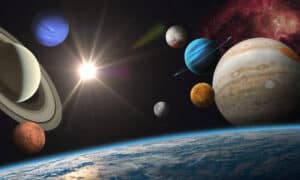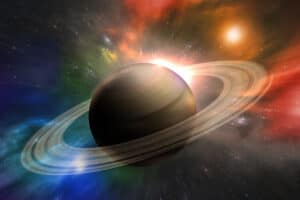Introduction
Did you know that the sun weighs around 330,000 times more than the weight of the earth? The sun is massive compared to the other planets in our solar system. In addition, the sun’s mass and size allow Earth to orbit it, receive heat and sunlight, and sustain life. While there is no life on the sun, life on Earth depends heavily on the sun and could not survive without it. Thanks to the sun, plants, humans, and animals can grow, stay warm, and enjoy beautiful days on Earth. Discover how much the sun weighs and find out the weights of other planets in our solar system.
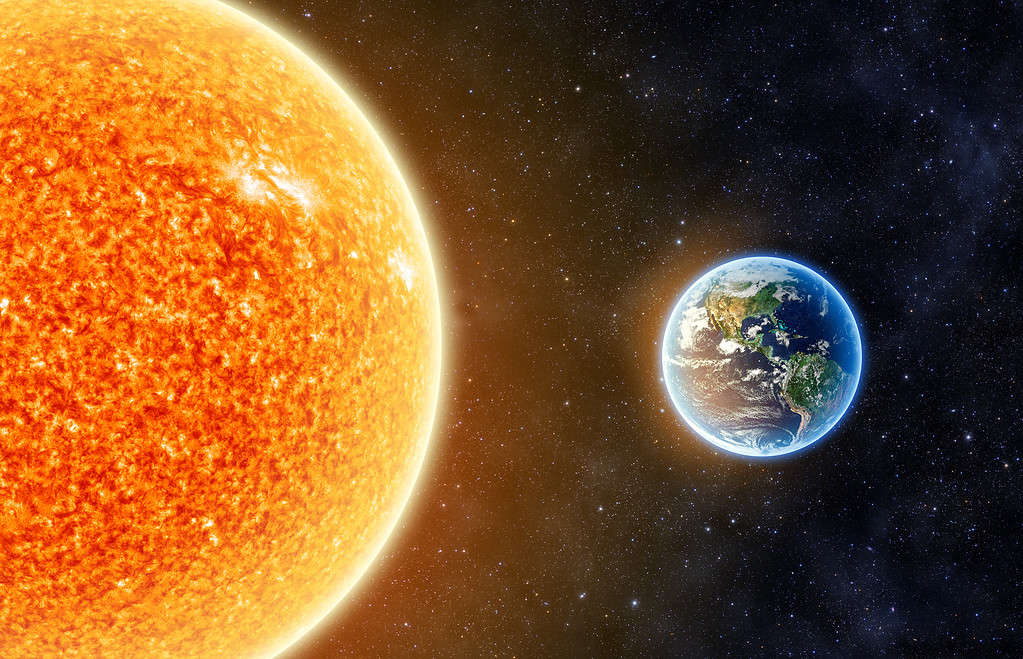
Earth revolves around the Sun, which is the center of the solar system.
©Aphelleon/Shutterstock.com
Background on the Sun
The sun is the main celestial object in our solar system. Our solar system includes the sun and the planets that orbit the sun. The planet that humans live on, Earth, orbits the sun and receives immense amounts of energy from it. The sun is a type of star that emits light and heat. In fact, the sun is extremely hot, as its temperature on the surface measures around 9,980ºF. Light and heat from the sun travel to Earth, allowing life on our planet to survive.
Furthermore, it is estimated that the sun has existed for around 4.6 billion years. The sun is also large in volume; its radius measures 109 times longer than Earth’s radius. In addition, the sun does not have a solid surface. Due to its intense heat, solids and liquids do not exist on the sun. Rather, most of what makes up the sun are atoms and molecules in the form of gas.
The Role of the Sun
The sun determines the amount of daylight and seasons that humans experience on Earth. The earth rotates on an imaginary axis, and it completes its rotation every 24 hours. This is why we have 24-hour days. Every 24 hours, the rotation of the earth resets and begins again. In addition, the earth orbits around the sun on an imaginary track. Earth’s orbit measures 365.256 days, resetting and beginning again after the orbit is completed. Thus, there are 365 days in a year, as a year represents the journey of Earth around the sun during its orbit.
However, the earth must account for the 0.256 not included in the standard year. Every four years, we experience a leap year. A leap year adds an extra day to the calendar, allowing for 366 days. Over four years, the 0.256 not included in the standard year amounts to a single day, which is added to the leap year. The day that commemorates a leap year is February 29th.
Seasons are determined by the sun according to Earth’s orbit. The imaginary axis that the earth rotates around is not positioned vertically. Rather, it is positioned diagonally. Thus, the earth is tilted on this axis. When the earth is at certain points during its orbit, the tilt combined with the earth’s positioning creates a certain season.
For example, the Northern Hemisphere is tilted toward the sun during June, resulting in summer. On the other hand, the Southern Hemisphere tilts away from the sun during June, resulting in winter. The reverse is true during months like December or January. During January, winter occurs in the Northern Hemisphere, as it is tilted away from the sun. The Southern Hemisphere experiences summer during January because it is tilted toward the sun.
How Much Does the Sun Weigh?
The sun weighs 1.989 x 1030 kilograms. Now, that’s a confusing number, so what does it mean? The weight of the sun is communicated through scientific notation. Scientific notation describes any number multiplied by 10 for a certain number of times. The exponent tells us how many times we must multiply the number by 10.
In this instance, the weight of the sun is equal to 1.989 kilograms multiplied by 10 for 30 times. Without scientific notation, we would have to record the sun’s weight as 1,989,000,000,000,000,000,000,000,000,000 kilograms, which is a jarring and complicated number! Since the weight of the sun is so large, we must use scientific notation to describe its weight effectively.
How are Planets Weighed?
The weight of a planet depends on a few factors. First, scientists must determine the gravitational pull of a planet. Gravitational pull all depends on gravity. Gravity on Earth describes the force that draws objects toward the center of our planet.
For instance, if you hold a pencil up in the air and let go, it will drop to the ground. The pencil is being pulled to the ground by gravity. In the same way, humans are pulled toward the earth’s center by gravity. Weight and gravity go hand in hand. Someone’s weight isn’t just a number; it describes how hard the earth is pulling that person toward its center through gravity. This is gravitational pull.
The other planets in our solar system operate in the same way, but their gravity measures differently than the gravity on Earth. For example, the weight you record on Earth will be different on Jupiter. You will weigh more on Jupiter because the gravitational pull on Jupiter is stronger than it is on Earth. In other words, Jupiter pulls you with more strength toward its center than Earth does.
Measuring Mass
However, your mass on Jupiter will be the same as it is on Earth. Mass measures the amount of matter contained within an object, animal, or person. Mass does not change because the matter contained within you does not change. Thus, you will record the same mass and contain the same amount of matter on any planet. Gravity will affect your weight but not your mass.
Scientists measure planets based on their mass, rather than their weight. The greater the mass of a planet, the greater the gravitational pull it has. Thus, scientists determine the mass of a planet by observing two main factors: gravitational pull and distance from other celestial bodies, like the moon, in relation to the planet. Through a series of equations, scientists calculate the mass of a planet using these two elements.
How Much Do Other Planets Weigh?
In our solar system, there are eight planets that orbit the sun. However, some argue that there are nine planets, including Pluto. The table below records the mass in scientific notation, from lightest to heaviest, of the eight official planets in our solar system.
| Planet | Mass |
|---|---|
| Mercury | 3.30 x 1023 kg |
| Mars | 6.42 x 1023 kg |
| Venus | 4.87 x 1024 kg |
| Earth | 5.97 x 1024 kg |
| Uranus | 8.68 x 1025 kg |
| Neptune | 1.02 x 1026 kg |
| Saturn | 5.68 x 1026 kg |
| Jupiter | 1.90 x 1027 kg |
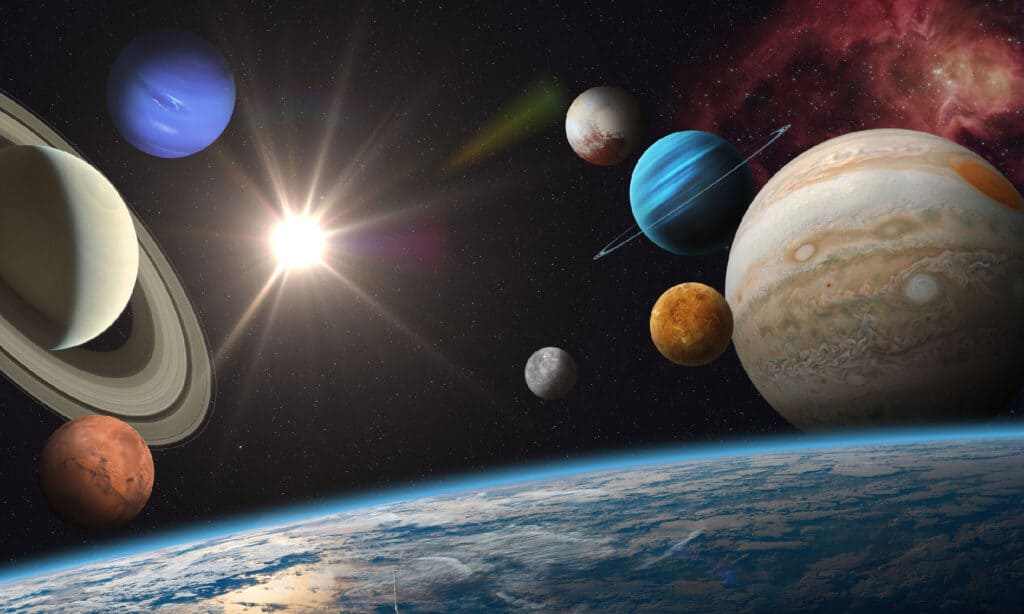
Eight official planets and the dwarf planet Pluto make up the solar system.
©iStock.com/buradaki
Do Any Other Suns Exist?
Perhaps surprisingly, the sun only remains in our solar system. People often refer to other stars at the center of other solar systems as “suns.” However, the term “Sun” is the name given to the star that Earth orbits. Stars at the center of other solar systems have different names, such as Sirius or Polaris. Nevertheless, scientists will often refer to stars with orbiting planets as “suns.” Referring to them in this way helps to distinguish them from stars that are not surrounded by celestial bodies.
Therefore, there are other “suns” throughout the universe. Approximately 3,500 known “suns” with orbiting planets exist throughout the Milky Way galaxy. The Milky Way galaxy is the galaxy that our solar system resides in. Only 6,000 stars in the Milky Way galaxy are visible from Earth, but billions of stars exist throughout the Milky Way. While scientists have discovered 3,500 “suns” in the Milky Way, there are likely millions more that we will never know about. Furthermore, the universe contains billions of other galaxies that contain their own stars and “suns.” While our sun might seem massive in size and weight when compared to Earth, it’s tiny compared to everything else that lies lightyears beyond our solar system.
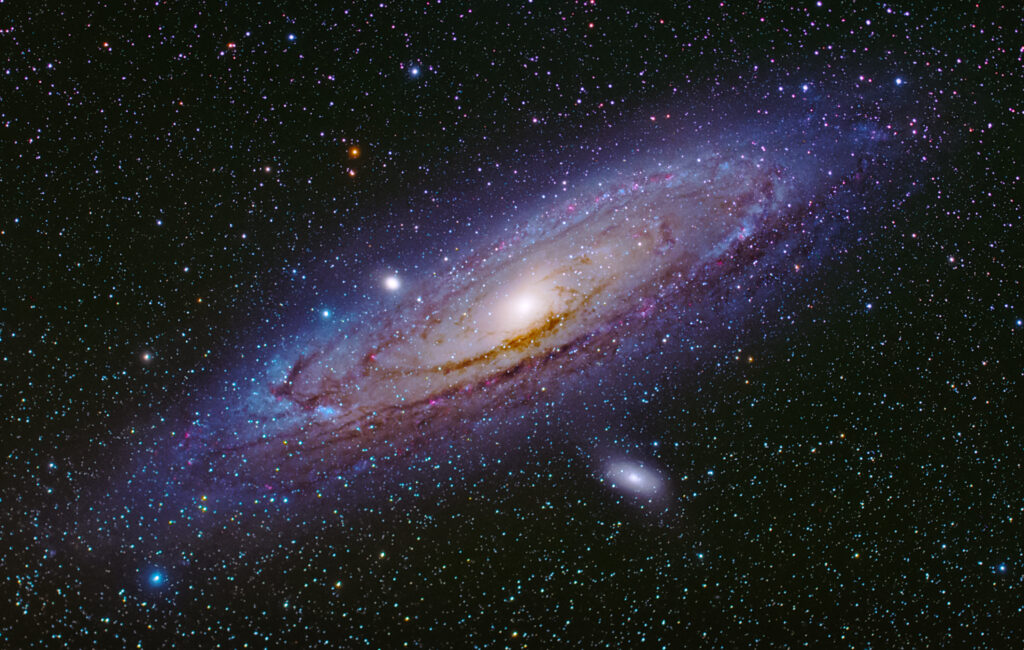
Scientists have found 3,500 “suns” in the Milky Way galaxy.
©Antares_StarExplorer/Shutterstock.com
The photo featured at the top of this post is © Lukasz Pawel Szczepa/Shutterstock.com
Thank you for reading! Have some feedback for us? Contact the AZ Animals editorial team.




